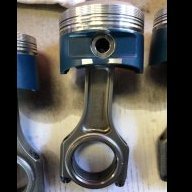My 300rwkw Adventures
Announcements
-
Latest Posts
-
By soviet_merlin · Posted
No idea about Neil's steering wheel, but I have the same behaviour in the Stagea. I doubt it has ever been messed with so might be normal. Indicating to turn right at a roundabout and correcting even a little bit to the left to go around will cancel the indicator. Never considered it an issue other than it being a bit odd. -
Does anyone know if this is off centered? Looks like it, when I indicate to go right, but turn my steering wheel slightly left it cancels (was always like that even before I started messing around with it) was wondering if anyone else has the same issue?
-
Nothing photo worthy since last update, lots of little plumbing bits for the AAC/Cold start valves, and unfortunately I still need another couple of parts for the brake booster line and the AAC into the plenum. Otherwise it all looks good to start up engine wise, onto checking the electrics/interior
-
What I’m saying is that I never heard of a non gtr 34 coming with a cooling panel stock or factory option. Maybe they might’ve I don’t know
-




Recommended Posts
Create an account or sign in to comment
You need to be a member in order to leave a comment
Create an account
Sign up for a new account in our community. It's easy!
Register a new accountSign in
Already have an account? Sign in here.
Sign In Now